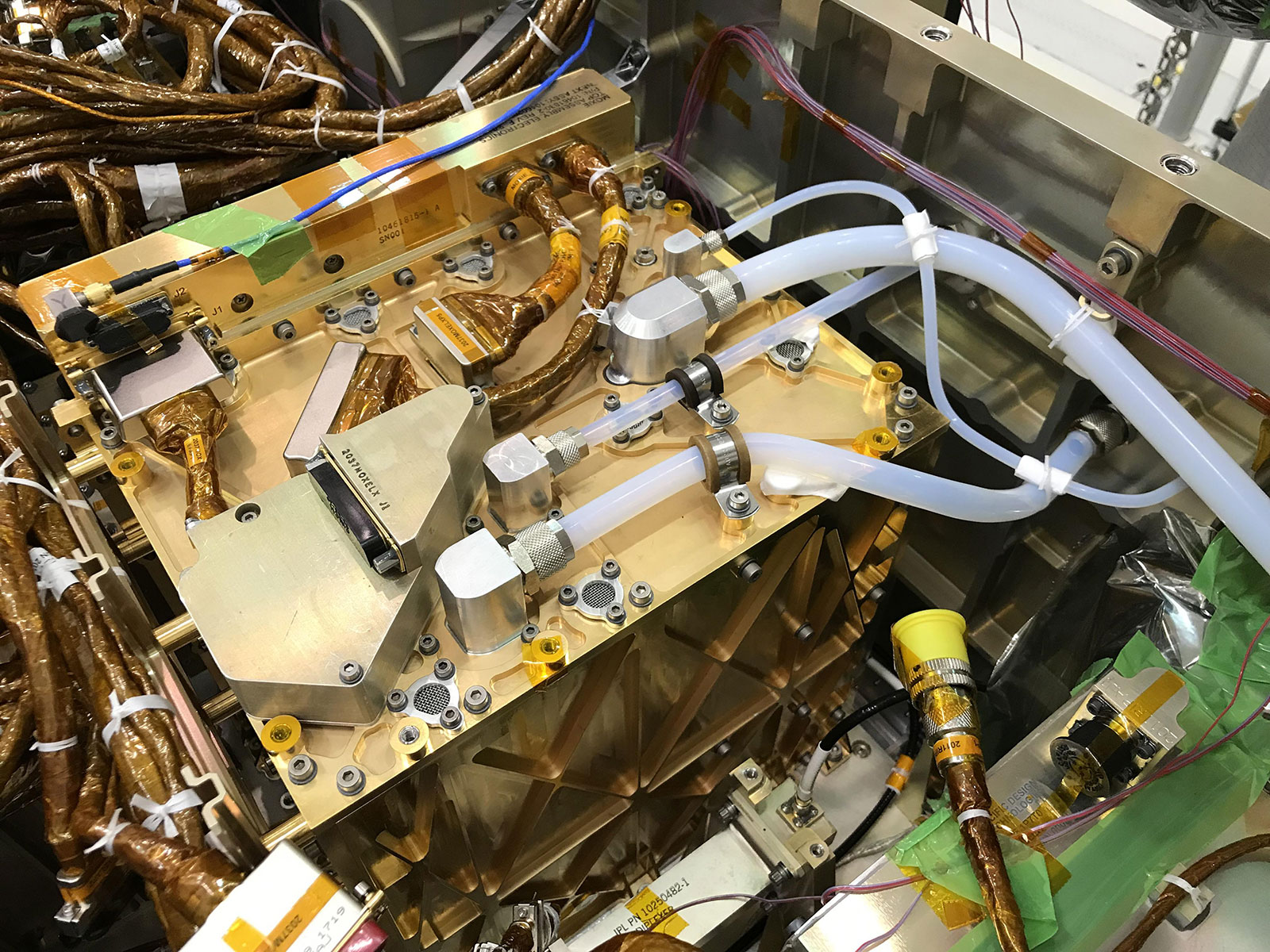3 min read

Perseverance has a unique device near its heart that inhales Mars’ atmosphere and exhales pure oxygen. This device is named MOXIE, the Mars Oxygen In Situ Resource Utilization Experiment. The toaster-sized MOXIE uses a high-temperature, electrochemical process called solid oxide electrolysis to strip oxygen ions from the carbon dioxide in the atmosphere of Mars. There are two little gas exit ports on MOXIE: one where oxygen flows out and another where a mixture of carbon monoxide and unreacted carbon dioxide exit.
MOXIE is significant as the first demonstration on another planet of In Situ Resource Utilization (ISRU), a group of technologies that enable extraterrestrial “living off the land.” Many people initially assume that this means that MOXIE’s primary purpose is to produce oxygen for future astronauts to breathe. While this is certainly an application, the most significant use of MOXIE’s technological descendants will be to produce oxygen for use as an oxidizer in rockets created to return explorers back to Earth after a successful Mars mission.
MOXIE gathers information about Mars and ISRU technology by proving itself in unique Martian weather conditions. The atmosphere around Jezero Crater, the present location of Perseverance, reached peak density for the year mid (Earth) summer. This presented the perfect opportunity for the MOXIE science team to step on the accelerator and test how fast we could safely produce oxygen. This test occurred on Sol 534 (Aug. 22, 2022) and produced a peak of 10.44 grams per hour of oxygen. This represented a new record for Martian oxygen production! The team was thrilled to surpass our design goal of 6 grams per hour by over 4.4 grams. The peak rate was held for 1 minute of the 70 minutes oxygen was produced during the run.
MOXIE’s next opportunity to operate came recently. Despite the decreasing density of the Mars atmosphere, on Sol 630 (Nov. 28, 2022) MOXIE managed to break the record again and produce nearly 10.56 grams per hour at peak. Oxygen production was sustained for a 9.79 grams per hour for nearly 40 minutes. These numbers may seem small, but MOXIE production runs are limited by available rover power. In addition, MOXIE technology was miniaturized to accommodate the limited space available on the rover. A MOXIE for a human Mars mission would produce oxygen nearly 200 times faster and work continuously for well over a year.
Each person who brought MOXIE to life, as well as future Mars astronauts, have a lot to celebrate about this milestone. Utilizing space resources will make space exploration sustainable and is key to opening new frontiers of discovery for humanity. Eight years have passed since I began working on MOXIE as a graduate student at MIT. Over that time, I have grown with the project and dedicated my career to discovering and utilizing space resources. I’ve taken this moment to rejoice and reflect on the perseverance required to create foundational technologies for our next leap into the cosmos.
Written by Forrest Meyen, MOXIE Science Team Member at Lunar Outpost







